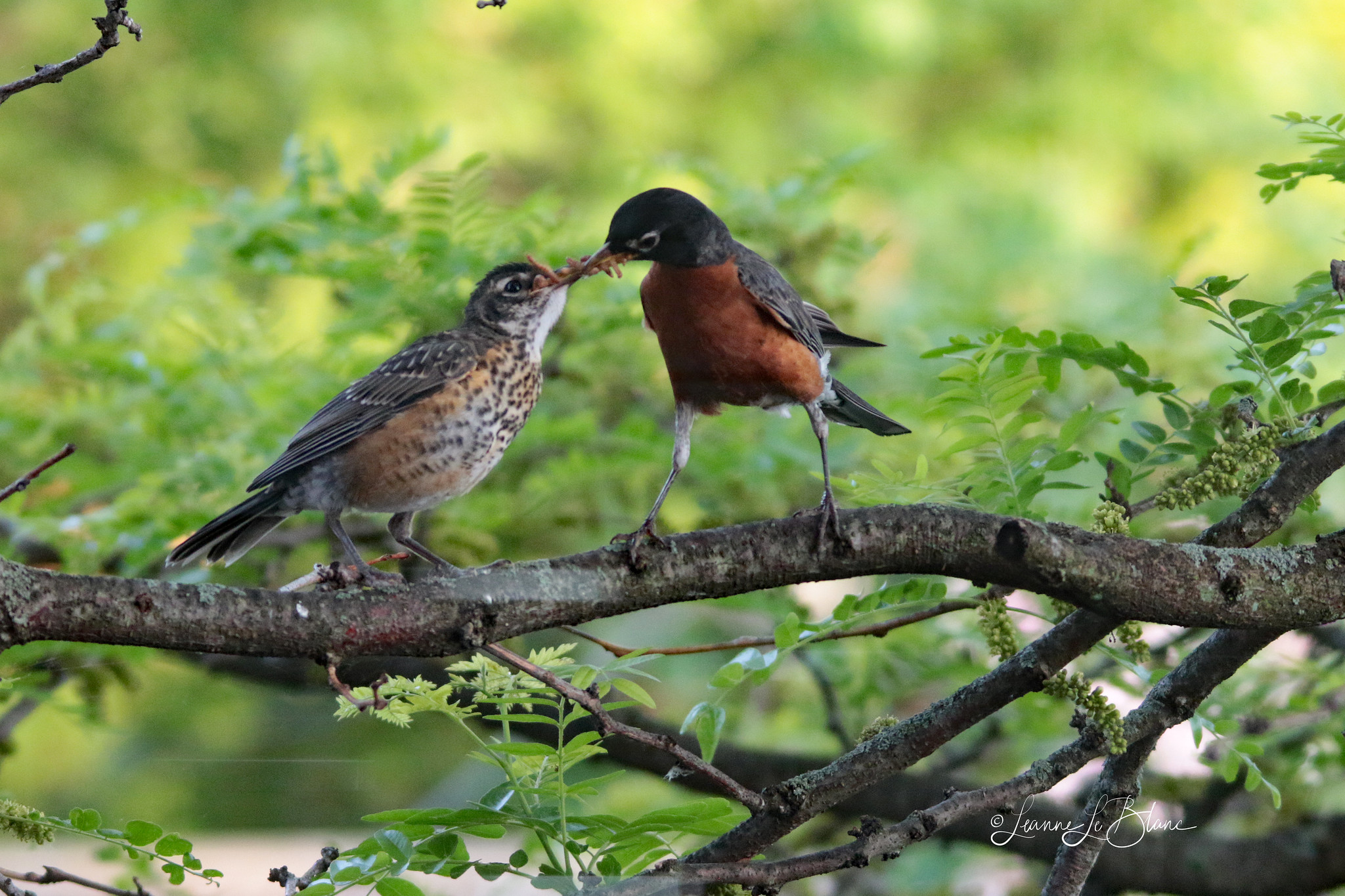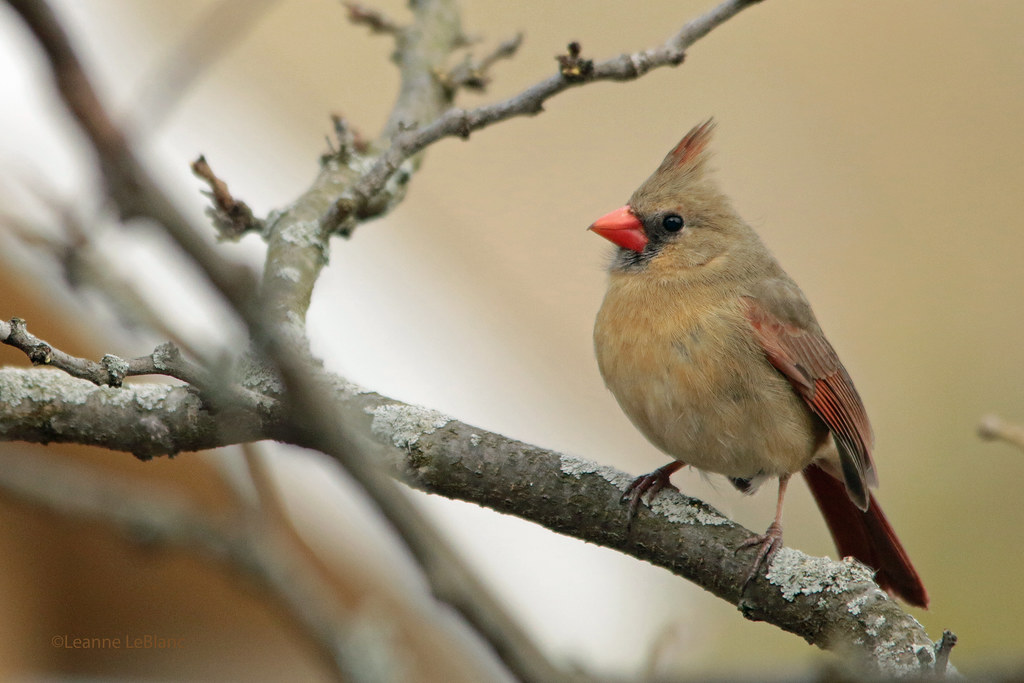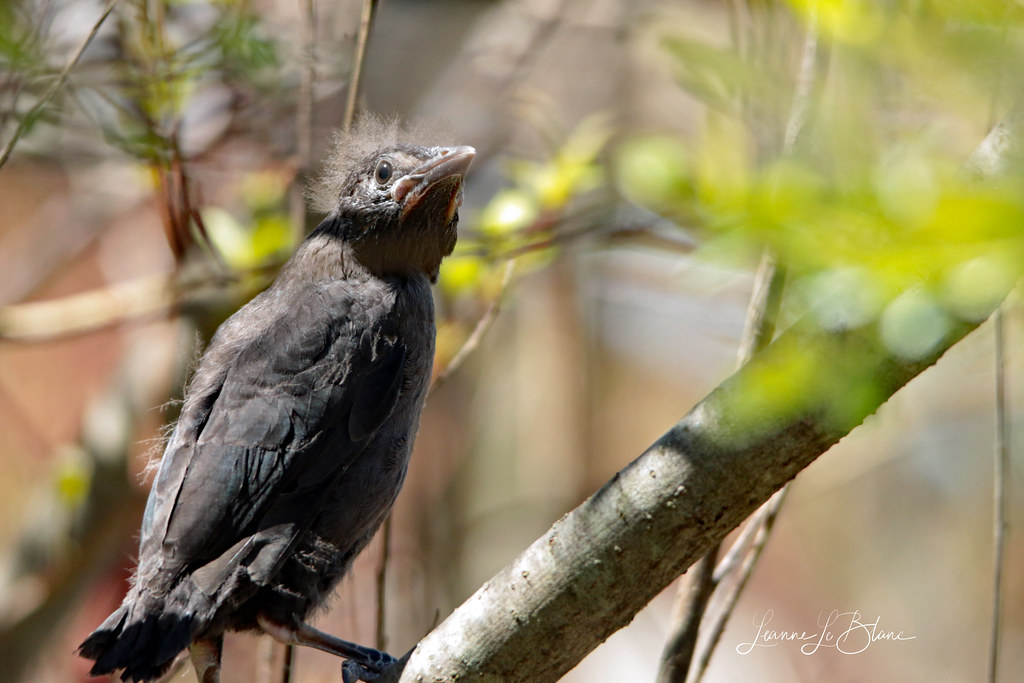 |
| Fledgling American Robin with short tail feathers, muted speckled plumage, and wrinkly gape. |
 |
| Fledgling American Robin being feed by Daddy Robin. |
Many fledglings have plumage that is muted, similar to the parent (usually the female), or a speckled look that helps to provide the necessary camouflage to keep young ones safe while they learn to forage for food, and practice the art of flying.
 |
| Adult Female Northern Cardinal. |
 |
| Fledgling Common Grackle |
Tail feathers are one of the last feathers to grow to their full length, so use the tail length as one of the gauges in determining how old a bird may be.
You may notice behaviours rather than physical differences that will help you to identify a bird as a fledgling or adult. Fluttering of the wings, hopping around, constant calling, are all signs that could indicate that you have found a baby bird. Not to worry. Mom and Dad will not be far away. They are watching from a distance. Young birds need the opportunity to practice life skills before they leave the family unit. Adults will bring the fledgling food as it is needed, and offer distractions if predators are close by, all the while giving the young bird the chance to forage for food and practice flying.
Hope this helps you identify what's what, and who's who in your backyard.
If you have any questions or comments about these young birds, please feel free to comment below and I will get back to you.
Enjoy the birds. ~ Leanne

















there is one fledging in my back yard with three feathers sticking out under about 45-60° to his wing. He must have hit his wing on a fence. It's been 3 days like that.
ReplyDeleteBut they didn't fell out.
When he would get a new ones?
Birds typically replace feathers when they molt. The time of molting depends on the species of bird and age. It's possible this little one may molt them out or may be able to stick it out until he does. Kristen
DeleteThank you so much for this. I have a fledgling house finch who's been frequenting my balcony bird feeder but is constantly fluttering his wings and constantly chirping and I was concerned that he had something mentally wrong as it appeared like Tourette's Syndrome. Thank you so much for explaining this so clearly, my mind is now at ease.
ReplyDeleteGlad that this article helped to provide some insight. Thanks for reading!
DeleteI have what I believe is a Robin fledgling in my fenced back yard. He's been there for a week now and makes his way from one side of the yard to the other. The parents are nearby during the day, but he seems to be alone in the evenings. I'm unable to let my dogs out, since one of them attempted to pick him up (that's how I first spotted him), and we've put off mowing and treating our backyard for mosquitos etc. What I'm trying to say is that I'm doing all I can to keep him safe, but truly hoping he leaves by Saturday (it's Monday), as I have a surprise birthday BBQ for my daughter's 30th. I've read conflicting answers as to how long it typically takes before they are able to fly. 😥
ReplyDeleteUsually when they leave or fledge the nest they are able to fly enough to jump up on branches or make short distance movements. If you think the bird is acting unusually you can call your local wildlife rehabber and seek advice. However it is normal for bird parents to look after their young after they fledge from the nest. In the case of robins the young ones kind of wander around close to where they nest was and the parents feed them on the ground in shrubs etc. Kristen
DeleteThank you for your reply. I first saw the little one on the lawn last Tuesday, so it has been a week. He has all his feathers, and can be seen hopping around across the entire lawn. The parents are for sure nearby, and he doesn't seem to be in distress. I just imagined that he would have been able to fly away by now.I believe the nest is in one of the small arborvitaes on my property, as the tall (HUGE) trees are all outside of the fence.
Delete